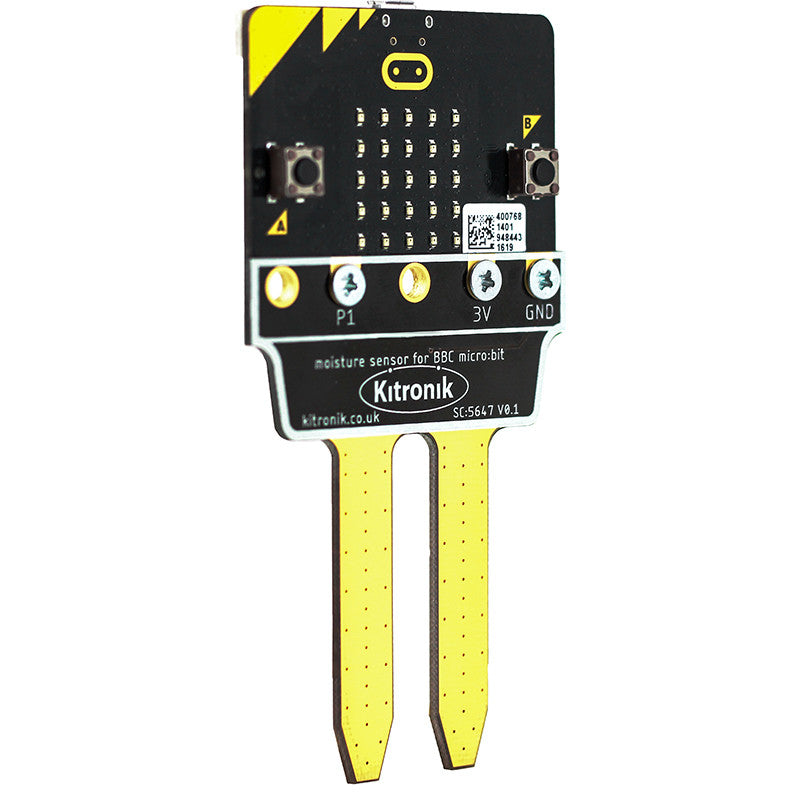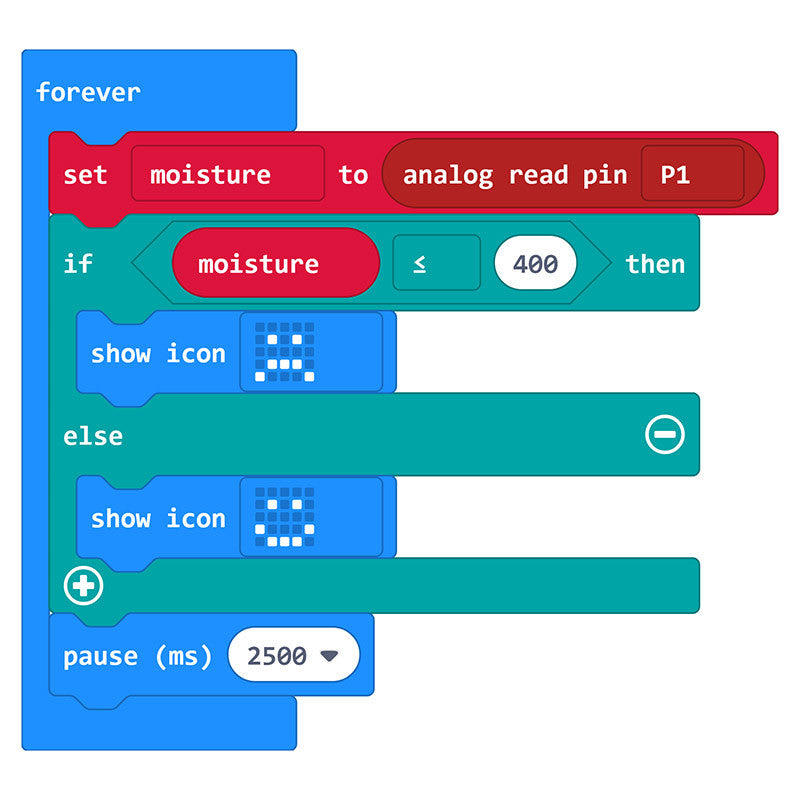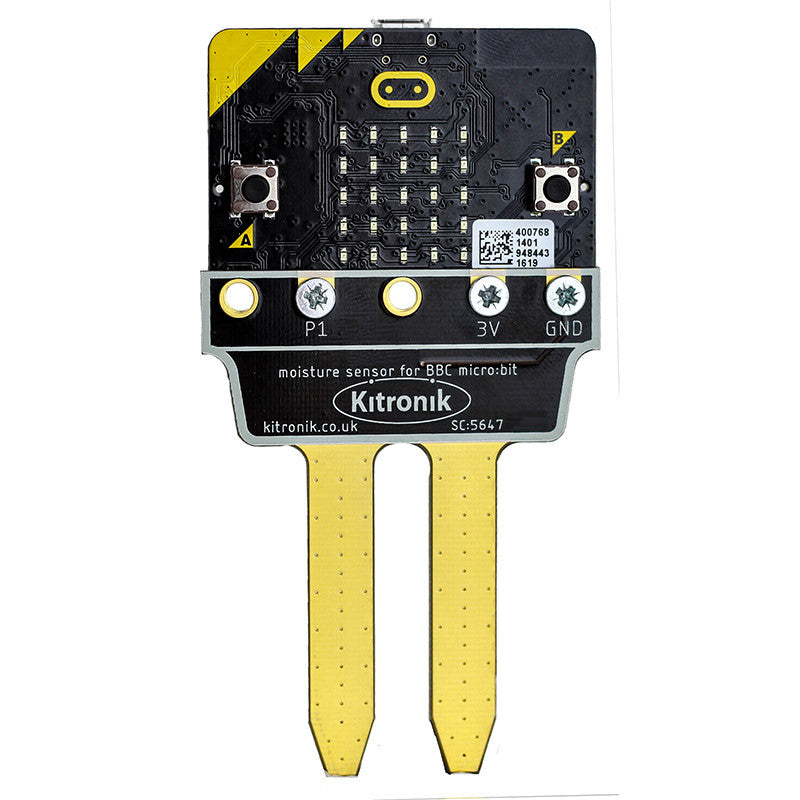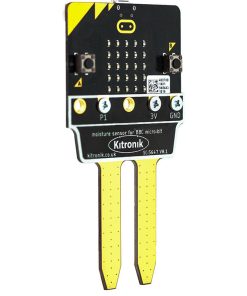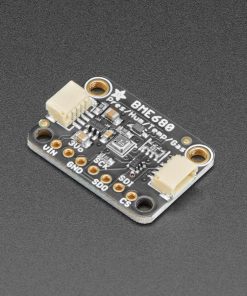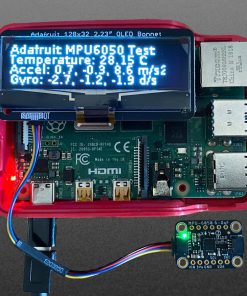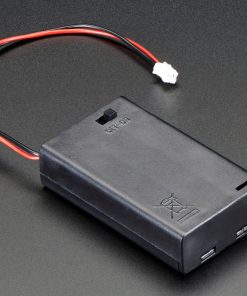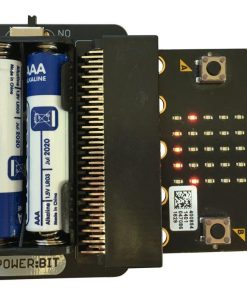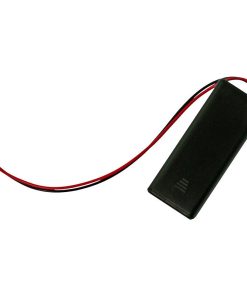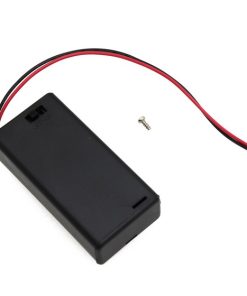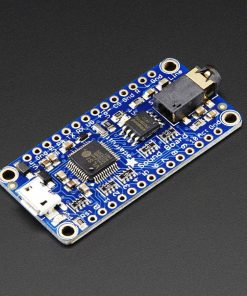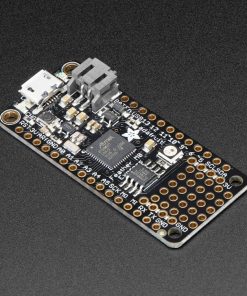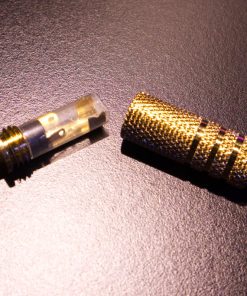Kitronik Prong Soil Moisture Sensor for BBC micro:bit Kitronik Ltd
$ 6,75 $ 4,05
The Prong soil moisture sensor mounts to a BBC micro:bit (not included) with 2 prongs to monitor moisture present in soil. Any water or moisture in the soil will conduct to give an analogue voltage that can be read by the BBC micro:bit.
Prong is powered from the 3V supply of the BBC micro:bit. Use either the USB or JST connector on the BBC micro:bit to power the circuit. Prong and the BBC micro:bit can also be powered from the Mi:Power board to create a compact stand alone unit.
The board has been designed so that the BBC micro:bit can be bolted on using 3 x M3 nuts and 3 x M3 screws. Place the screws through the P1, 3V and GND holes of the PCB and BBC micro:bit, then use the M3 nuts to fasten together on the back of BBC micro:bit. Alternatively croc-clips can be used to connect between the Prong and the BBC micro:bit.
If using the Mi:Power board then additionally connecting P0 means the BBC micro:bit can sound an alarm if the soil becomes too dry.
When fitted to the Prong moisture sensor, the micro:bit can be coded via any of the micro:bit editors, such as the Microsoft MakeCode editor.
The Kitronik Prong is also used in one of Code Club Australia’s Moonhack 2020 projects. You can get a water pump here, and a relay to automate watering.
Note: To ensure that the Prong moisture sensor has a long and fulfilling life, it is better to write your code to perform a moisture check every so often rather than continuously. When the check is performed continuously it promotes rapid erosion of the electrodes.
Features:
- Measure soil moisture levels.
- Attaches directly to the microbit.
- Use in conjunction with the Mi:Power board to provide power and an audible alarm.
- Code with any microbit coding editor.
Contents:
- 1 x Prong Soil Moisture Sensor for microbit.
- 3 x M3 Hex Nuts.
- 3 x M3 Countersunk Screws.
Dimensions:
- Length: 68mm.
- Height: 53mm.
- PCB Thickness: 1.6mm.
Requires:
- 1 x BBC micro:bit.
Resources:
-
Datasheet.

- Instructions for attaching to the micro:bit
Fast Shipping and Professional Packaging
Because of our long-standing partnership with UPS, FedEx, DHL and many other leading global carriers, we can provide various shipping options. Our warehouse staff is highly trained and will pack the items according to our exact and precise specifications. Before shipping, your goods will be thoroughly examined and secured. We deliver to thousands of customers every day from all over the world. This is a sign of our dedication to being the largest online retailer worldwide. There are distribution centers as well as warehouses located in Europe as well as the USA.
Note: Orders with more than one product are assigned a specific processing period dependent on the particular item.
Before shipping, we will examine the items ordered carefully before shipping. The majority of orders are shipped within 48 hours. The time to deliver varies from 3-7 days.
Returns
The stock is constantly changing and cannot be fully controlled by us due to the involvement of many parties including the factory and our warehouse. This means that the actual stock could alter at any time. Be aware that it is possible that your order could be out of stock after you have made the order.
Our policy lasts thirty days. If you haven't received your item within 30 days, we're unable to offer the option of a refund or exchange.
You are able to return an item when it's unopened and is in the same condition as when you first received it. It should also be returned in its original packaging.
